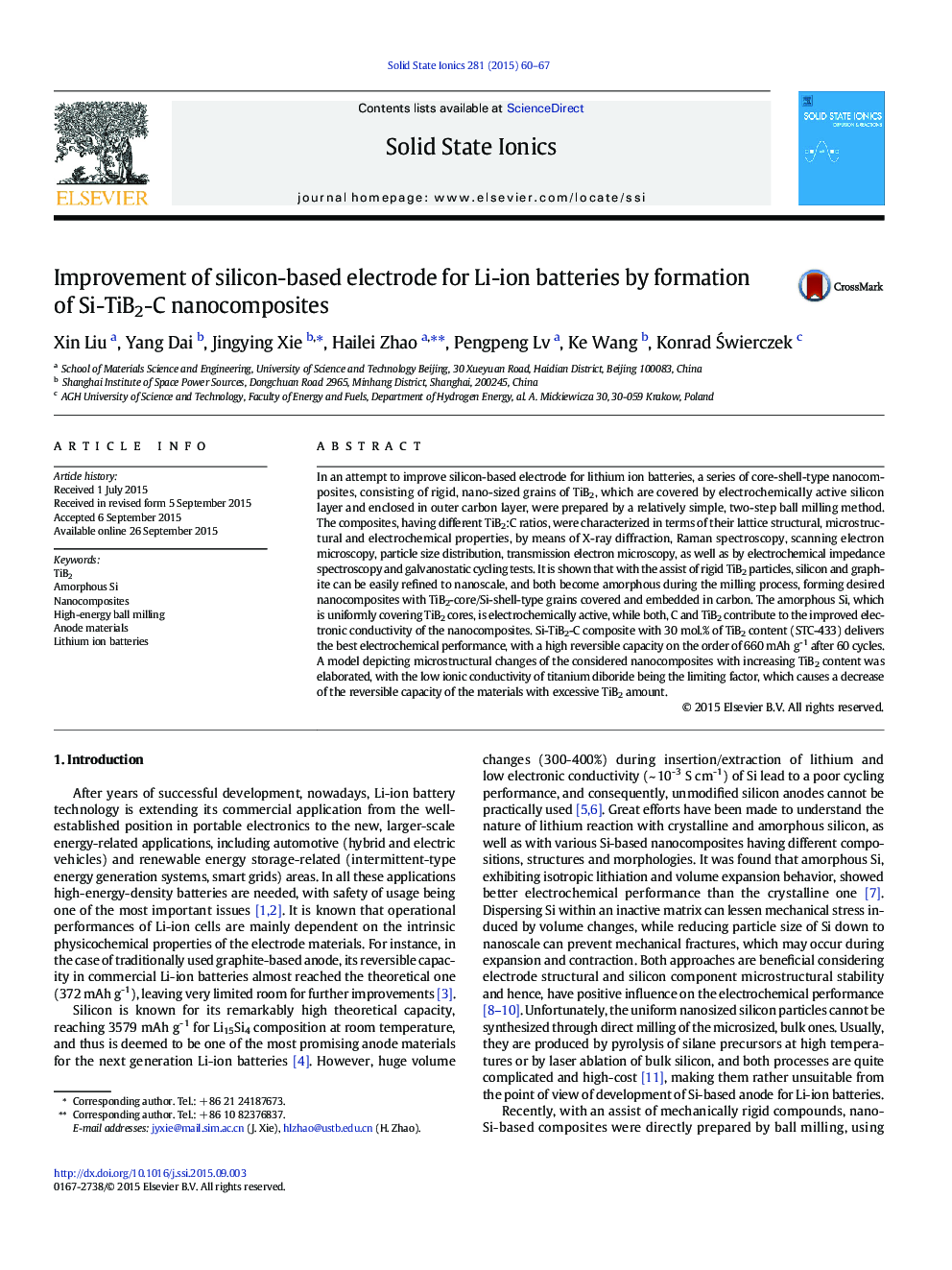| Article ID | Journal | Published Year | Pages | File Type |
|---|---|---|---|---|
| 7745703 | Solid State Ionics | 2015 | 8 Pages |
Abstract
In an attempt to improve silicon-based electrode for lithium ion batteries, a series of core-shell-type nanocomposites, consisting of rigid, nano-sized grains of TiB2, which are covered by electrochemically active silicon layer and enclosed in outer carbon layer, were prepared by a relatively simple, two-step ball milling method. The composites, having different TiB2:C ratios, were characterized in terms of their lattice structural, microstructural and electrochemical properties, by means of X-ray diffraction, Raman spectroscopy, scanning electron microscopy, particle size distribution, transmission electron microscopy, as well as by electrochemical impedance spectroscopy and galvanostatic cycling tests. It is shown that with the assist of rigid TiB2 particles, silicon and graphite can be easily refined to nanoscale, and both become amorphous during the milling process, forming desired nanocomposites with TiB2-core/Si-shell-type grains covered and embedded in carbon. The amorphous Si, which is uniformly covering TiB2 cores, is electrochemically active, while both, C and TiB2 contribute to the improved electronic conductivity of the nanocomposites. Si-TiB2-C composite with 30Â mol.% of TiB2 content (STC-433) delivers the best electrochemical performance, with a high reversible capacity on the order of 660 mAh g-Â 1 after 60Â cycles. A model depicting microstructural changes of the considered nanocomposites with increasing TiB2 content was elaborated, with the low ionic conductivity of titanium diboride being the limiting factor, which causes a decrease of the reversible capacity of the materials with excessive TiB2 amount.
Related Topics
Physical Sciences and Engineering
Chemistry
Electrochemistry
Authors
Xin Liu, Yang Dai, Jingying Xie, Hailei Zhao, Pengpeng Lv, Ke Wang, Konrad Åwierczek,
